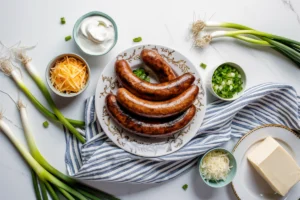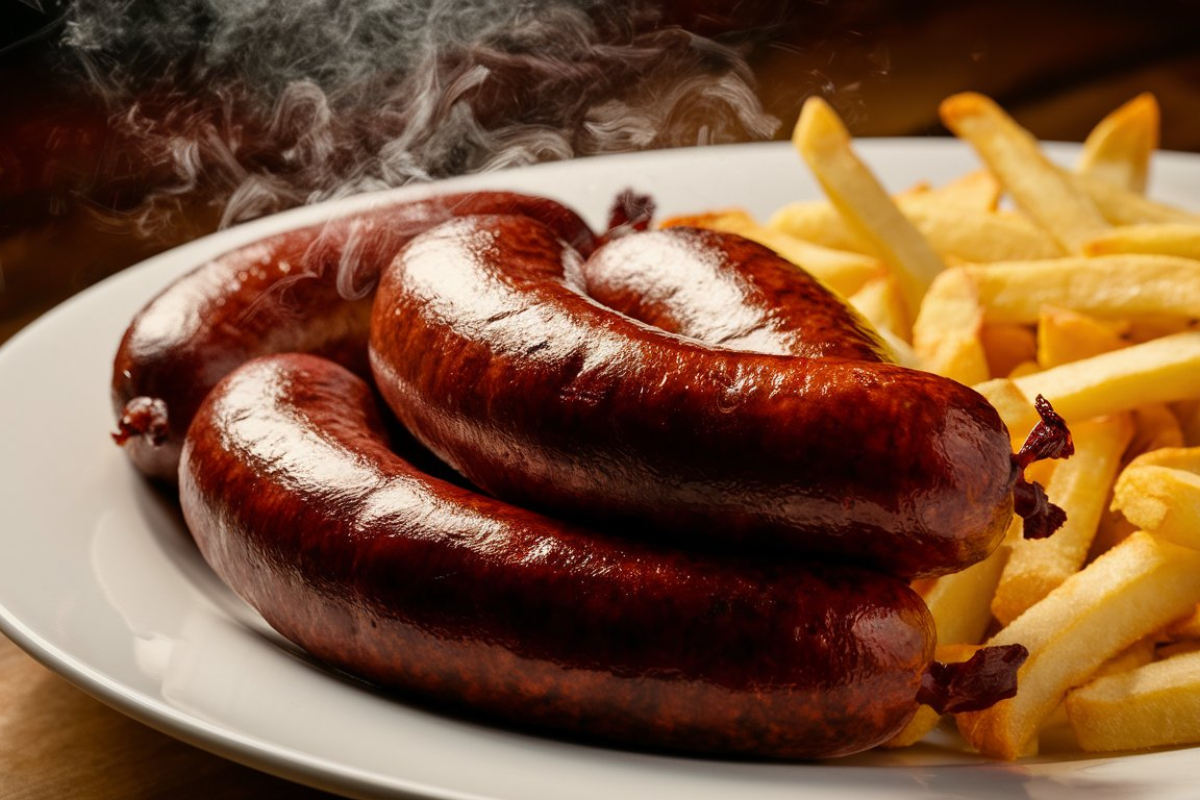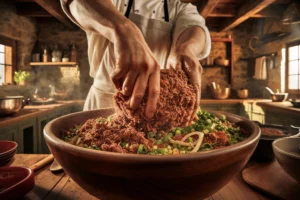Preparing to Cook Boudain
Essential Ingredients for Boudain

Types of Meat Used
Traditionally, Boudain is made with pork, particularly utilizing the liver and other offal to add a deep, rich taste. However, modern takes on this recipe often incorporate chicken or turkey as alternatives, offering a lighter fare while still retaining the robust essence of the dish. The choice of meat can vary based on dietary preferences or availability, each bringing its unique flavor and texture to the Boudain.
Spices and Seasoning Overview
The spice mix is crucial in defining Boudain’s characteristically bold flavor. Key seasonings include Cajun staples like cayenne pepper, paprika, and black pepper, along with garlic and onions for additional depth. Herbs such as parsley and green onions are also essential, providing freshness that balances the richness of the meats. The exact blend can be tailored to taste, but the goal is always to achieve a harmonious flavor that is distinctly Cajun.
Kitchen Tools Needed for Making Boudain
While the ingredients are simple, having the right tools can make the process of making Boudain much smoother and more enjoyable.
Specialized Preparation Equipment
For those serious about sausage making, you must have a meat grinder and a sausage stuffer. The grinder provides fresh, finely ground meat, essential for the texture of the stuffing. Conversely, the sausage stuffer fills the casing evenly and prevents air pockets, which is crucial for cooking the Boudain evenly and preventing the casing from bursting.
Alternative Tools in a Home Kitchen
Not everyone has access to specialized sausage-making equipment. However, that shouldn’t stop you from trying your hand at making Boudain. You can use a basic food processor to grind the meat. If you prefer a chunkier texture, mince it more finely by hand. For stuffing the casings, a funnel and a ladle can work in a pinch. These tools require a bit more patience and dexterity, though. Despite this, these alternatives can still produce delicious Boudain. This proves that where there’s a will, there’s a way in the kitchen.
Include a detailed comparison of different meats used in Boudain
Go beyond the typical meats and discuss exotic or less common alternatives that some adventurous chefs might use, like venison or duck.
Discuss regional spice variations
Explain how Boudain’s seasoning differs in various parts of Louisiana or how other regions of the U.S. have adapted the spice blend to local tastes.
As we delve deeper into the intricacies of mixing and cooking, remember this: making Boudain is as much about the process as the final product. Preparing and cooking offer a delightful adventure into Cajun culinary traditions. They provide not just a meal but an experience to savor.
FAQs
Common Questions and Answers
Boudain, a flavorful staple in Cajun cuisine, often raises questions. This occurs among both enthusiasts and newcomers alike. Consequently, we’ll address some of the most frequently asked questions here. By providing clarity and guidance, we aim to help you perfect your Cajun sausage recipes. This approach ensures that every enthusiast can enhance their cooking skills effectively.
Can Boudain be Made Vegetarian?
Absolutely! To cater to vegetarian preferences, you can substitute the traditional meats with plant-based alternatives like textured vegetable protein or finely chopped mushrooms and tofu, which mimic the texture of minced meat. Seasonings remain the same, ensuring that the essential Cajun flavors are preserved. This adaptation allows everyone to enjoy the rich cultural heritage and deliciousness of Boudain, regardless of dietary restrictions.
How Long Can You Store Cajun sausage?
Cajun sausage can be stored in the refrigerator for up to three days if kept in a sealed container. For longer storage, freezing is an excellent option. Properly packed Boudain can last in the freezer for up to three months. Always thaw in the refrigerator before reheating gently to preserve its texture and flavors. This makes Cajun sausage a great make-ahead dish for busy days or upcoming events.
Is Boudain Gluten-Free?
Traditional Boudain recipes include rice, which is gluten-free. However, ensure all other ingredients, like seasonings, are gluten-free. Always check labels to be safe.
Can Boudain be made without rice?
By understanding these aspects, you can enhance your cooking experience and ensure that every batch of Boudain you make is as delicious as it is authentic. Whether adapting the recipe for a vegetarian diet or planning meals ahead of time, these insights will help you enjoy Boudain in various contexts.


